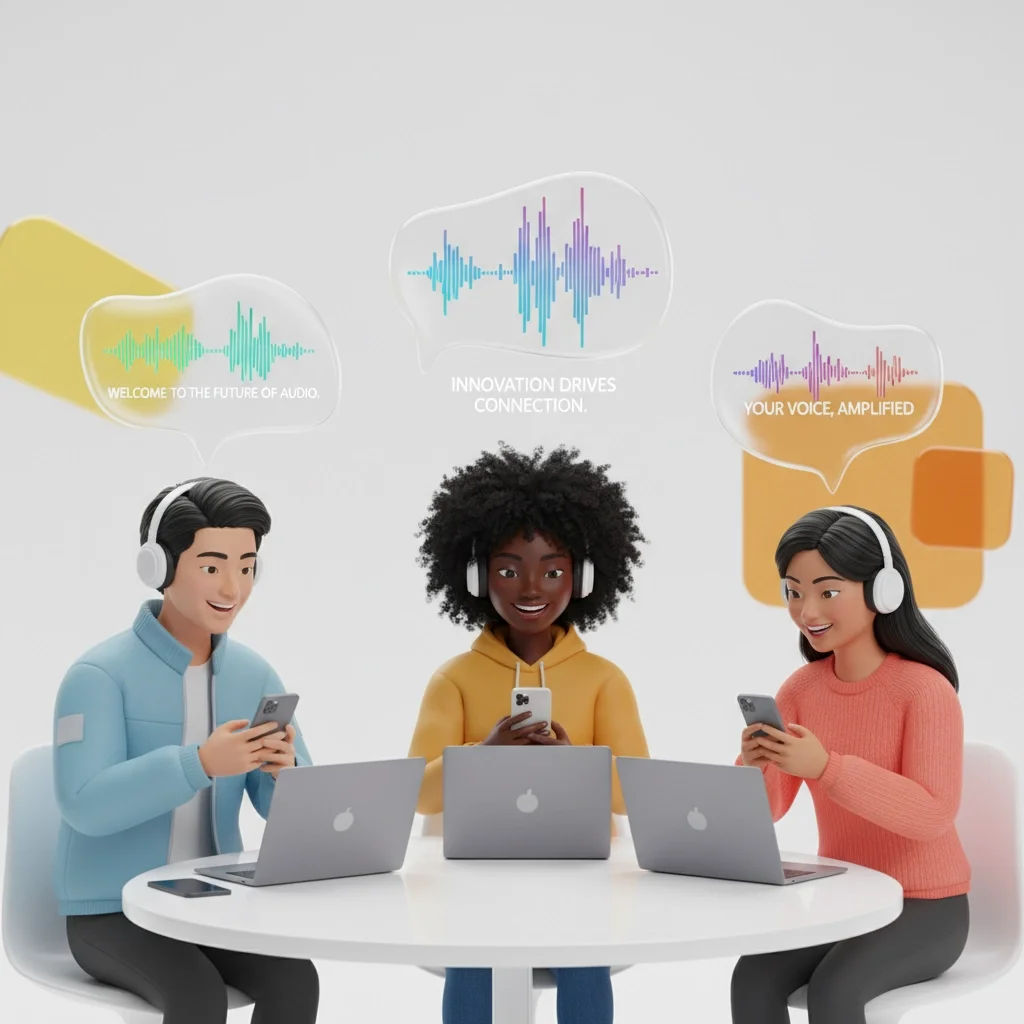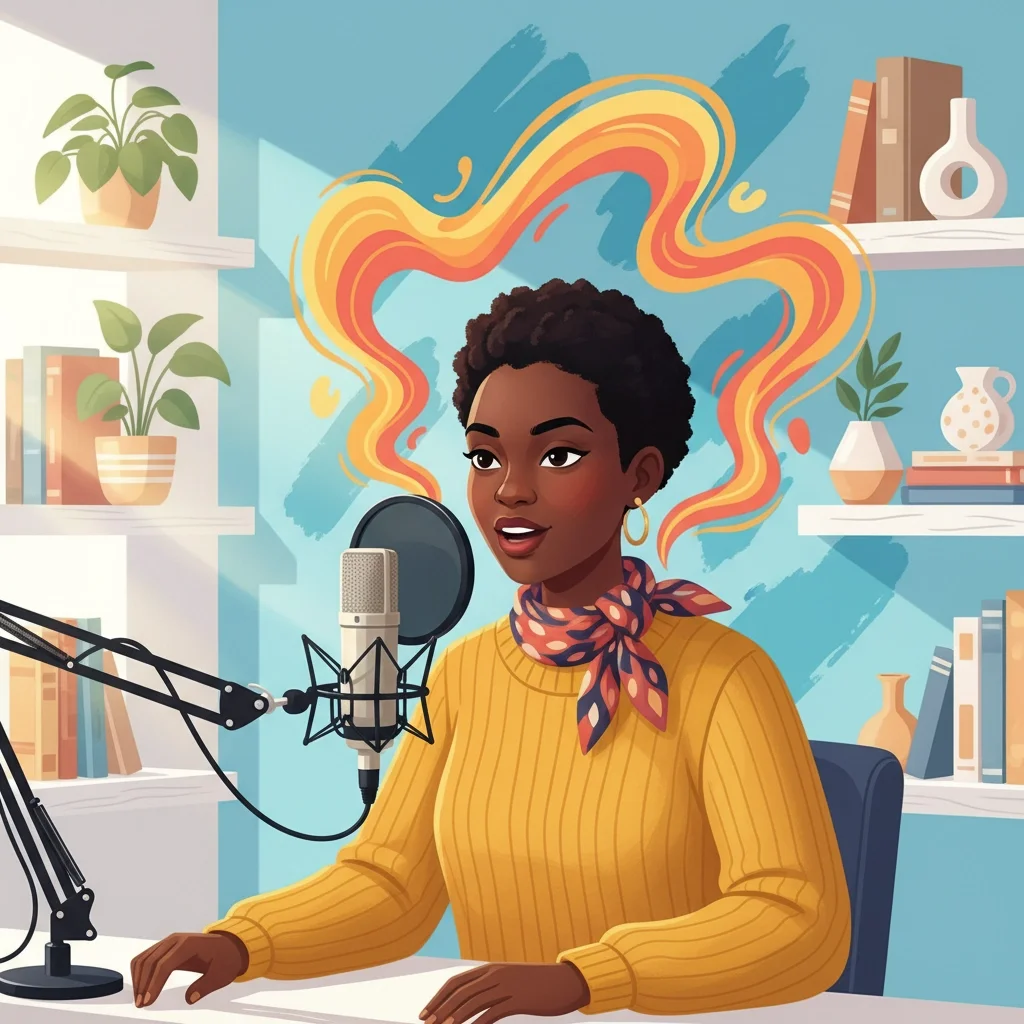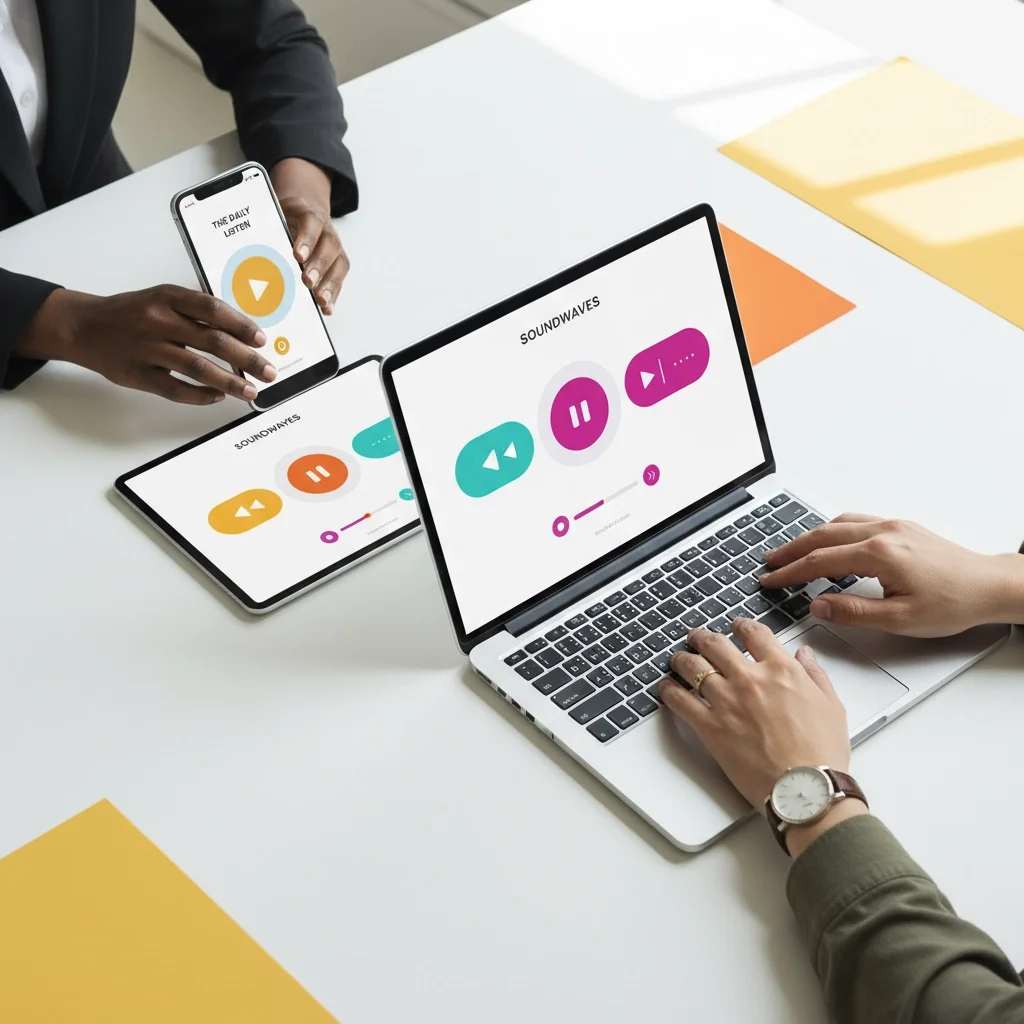Stop Making These 7 Accessibility Mistakes That Are Killing Your Podcast Growth
Let's get real for a second: your podcast might be unintentionally shutting out a huge chunk of your potential audience. 😬
I'm talking about accessibility. And before you roll your eyes thinking this is just about "checking boxes," hear me out. Making your podcast accessible isn't just the right thing to do (though it absolutely is). It's also a massive growth opportunity you're probably leaving on the table.
Think about it: millions of people are deaf or hard of hearing, have visual impairments, or face other barriers that make consuming content challenging. When you ignore accessibility, you're not just excluding them: you're missing out on loyal listeners, better SEO, and a reputation as a creator who actually cares about their community.
Ready to fix this? Let's dive into the seven biggest accessibility mistakes that are quietly killing your podcast growth: and how to turn them around.
1. Publishing Episodes Without Transcripts
This one's a biggie, and honestly, it's the easiest fix with the biggest impact.
Why it's hurting you: When you skip transcripts, you're automatically excluding deaf and hard-of-hearing listeners. But here's the kicker: you're also missing out on serious SEO juice. Search engines can't "listen" to your podcast, but they sure can read transcripts.
The simple fix: Start adding transcripts to your episodes. You don't need to type them out manually (ain't nobody got time for that!). Use tools like Otter.ai, Rev, or even your podcast hosting platform's built-in transcription features.
Drop those transcripts in your show notes, on your website, or right in your episode descriptions. Your SEO will thank you, your accessibility will improve, and you'll start showing up in search results for topics you talk about. Win-win-win! 🎉
2. Ignoring Audio Quality Issues
Poor audio quality isn't just annoying: it's actually an accessibility barrier. When your sound is inconsistent, muffled, or full of background noise, it makes your content nearly impossible to follow for people with hearing difficulties.
Why it's a problem: Listeners with hearing challenges rely on crystal-clear audio even more than the average person. If they have to strain to understand you, they'll just move on to a podcast that's easier to consume.
The fix: Invest in decent equipment and learn basic audio editing. You don't need a $500 microphone: a solid USB mic and some basic noise reduction can work wonders.
Here's what makes the biggest difference:
Record in a quiet space (even a closet full of clothes works!)
Use consistent volume levels throughout your episode
Remove background noise during editing
Avoid long, awkward pauses that can confuse listeners
Your audio quality is your foundation. Get this right, and everything else gets easier.
3. Creating Video Content Without Captions
If you're jumping on the video podcast trend (smart move!), but you're not adding captions, you're missing a huge opportunity.
The reality: Captions aren't just for people who are deaf or hard of hearing. They help anyone watching in a noisy environment, people whose first language isn't English, and honestly, anyone who prefers to read along while listening.
Make it happen: Most video editing platforms now have automatic captioning features. YouTube does it automatically (though you should always review and clean them up). For other platforms, tools like Rev or Kapwing can generate captions quickly and affordably.
Pro tip: Make your captions readable by using longer phrases instead of single words, and give viewers time to actually read them. Nobody likes captions that flash by in milliseconds! ⚡
4. Having an Inaccessible Website
Your website is often the first touchpoint people have with your podcast. If it's not accessible, you're losing listeners before they even hit play.
Common website accessibility fails:
Forms without proper labels
Images without alt text
Poor color contrast
Links that just say "click here" instead of being descriptive
Quick wins for your site:
Use clear, descriptive link text ("Listen on Apple Podcasts" instead of "click here")
Add alt text to your images
Organize your content with proper headings (H1, H2, H3, etc.)
Make sure your site can be navigated with just a keyboard
These changes take minutes but make a world of difference for screen reader users and anyone navigating your site with assistive technology.
5. Using Media Players That Aren't Accessible
This one's sneaky because you might not even realize your media player is creating barriers.
What to look for: Your podcast player should have clear button labels, keyboard navigation, and shouldn't auto-play content (which can be jarring or disorienting for some listeners).
The solution: Choose hosting platforms that prioritize accessibility. Most major podcast hosts are getting better at this, but it's worth checking. Look for players that clearly label their play/pause buttons, have visible controls, and work well with screen readers.
If you're embedding players on your website, test them out: try navigating with just your keyboard and see how the experience feels.
6. Speaking in Jargon and Complex Language
Here's something that surprises people: accessibility isn't just about technical features. The way you communicate matters too.
Why this hurts: When you use industry jargon, complex terminology, or speak in a way that assumes tons of background knowledge, you exclude people with cognitive disabilities, non-native English speakers, and frankly, anyone who's new to your topic.
The mindset shift: Talk to your listeners like you're talking to a friend. Explain concepts clearly, define terms when you use them, and don't be afraid to repeat important information.
This doesn't mean dumbing down your content: it means making it more inclusive and honestly, more engaging for everyone. Clear communication is just good podcasting, period.
7. Only Creating Audio Content
I get it: you started an audio podcast, so why would you need video? But here's the thing: some people benefit enormously from visual cues like facial expressions, lip reading, or on-screen graphics.
The opportunity: You don't have to choose between audio and video. Record your podcasts as video and offer both formats. This gives you:
More accessibility options for your audience
Additional platforms to share content (YouTube, social media clips, etc.)
Visual elements that can help explain complex topics
Start simple: You don't need fancy video production. A simple setup with good lighting where people can see your face clearly makes a huge difference. Add some on-screen text for key points, and you're golden.
Here's the Real Talk
Making your podcast accessible isn't about perfection: it's about intention and improvement. You don't have to fix everything at once. Pick one or two of these areas and start there.
Start with the biggest impact moves:
Add transcripts to your next few episodes
Clean up your audio quality
If you do video, add captions
These three changes alone will dramatically expand your potential audience and improve your podcast's discoverability.
Your Next Steps
Don't let this be another blog post you read and forget about. Here's what I want you to do right now:
Choose ONE accessibility improvement you're going to implement this week. Maybe it's adding transcripts to your latest episode, or maybe it's checking your website for accessibility issues.
Whatever you choose, commit to it. Your future listeners (and your podcast's growth) will thank you.
Making your podcast accessible isn't just about being inclusive: though that matters enormously. It's about creating content that reaches more people, ranks better in search, and builds a stronger, more loyal community around your show.
Ready to make your podcast accessible to everyone? Your audience is waiting: all of them. 🎙️✨
Want help implementing these accessibility improvements? We help podcasters create shows that truly connect with their entire audience. Reach out to us and let's make your podcast accessible and amazing.




